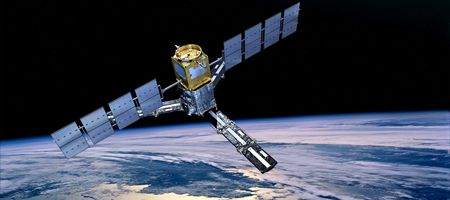The Fermi paradox asks why, if intelligent life is common, no technological civilizations have ever been observed.
As human beings send out probes into outer space, it’s notable that we’ve never discovered evidence of other civilizations doing the same. Is this a sign that there really isn’t anybody out there?

Not necessarily, say two postdoctoral researchers at Penn State, who have approached the problem mathematically. They say we simply haven’t looked in enough places to be certain that no extraterrestrial artifacts exist in our solar system.
“The vastness of space, combined with our limited searches to date, implies that any remote unpiloted exploratory probes of extraterrestrial origin would likely remain unnoticed,” say Jacob Haqq-Misra and Ravi Kumar Kopparapu.
Alien probes, like ours, would be small and could be hidden in a variety of places. In the asteroid belt, for example, they would probably go unnoticed.
“Extraterrestrial artifacts may exist in the solar system without our knowledge simply because we have not yet searched sufficiently,” say Haqq-Misra and Kopparapu. “Few if any of the attempts would be capable of detecting a 1 to 10 meter probe.”
The two researchers used a probabilistic method to determine if we have looked closely enough anywhere in the solar system to definitively say there are no nonterrestrial objects here.
They calculated how much of the solar system would need to be thoroughly searched, and conclude that most searches to date haven’t been fine enough to rule out – well, anywhere really.
“The surface of the Earth is one of the few places in the solar system that has been almost completely examined at a spatial resolution of less than three feet,” said Haqq-Misra and Kopparapu.
Even here, there are still caves, jungles and deserts as well as the ocean floor and subsurface areas that have not been explored. However, says the team, there’s a high probability that no nonterrestrial artifacts exist here.
The moon has been searched to some extent, and the Lunar Reconnaissance Orbiter should soon be ab le to tell us if there are any nonterrestrial objects on the moon.
Mars, though, is still mostly unsurveyed and the researchers’ confidence in the probability of no nonterrestrial artifacts is low. Similarly, locations like the Earth-moon Lagrange points, the asteroid belt and the Kuiper belt might also shelter probes.
“Searches to date of the solar system are sufficiently incomplete that we cannot rule out the possibility that nonterrestrial artifacts are present and may even be observing us,” say Haqq-Misra and Kopparapu.
“The completeness of our search for nonterrestrial objects will inevitably increase as we continue to explore the moon, Mars and other nearby regions of space.”






